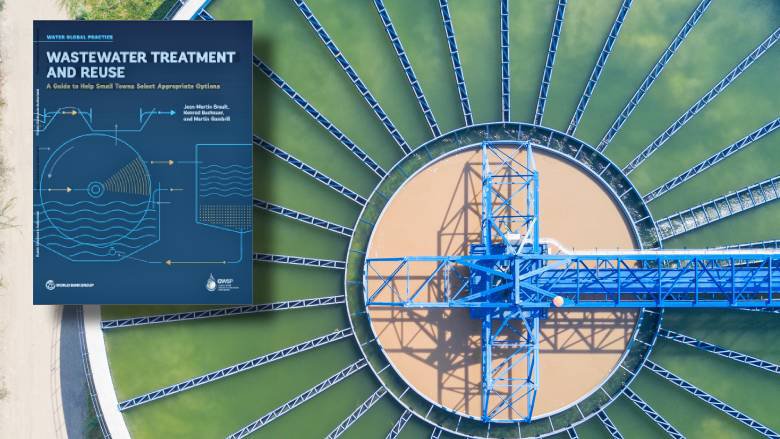Strategic Approaches to Enhance Drainage Treatment Performance and Reduce Environmental Impact
In the world of drainage therapy, the quest for enhanced efficiency and lowered environmental effect is a continuous challenge that requires tactical solutions. As culture comes to grips with the critical to take care of water resources sustainably, a nuanced technique becomes vital. The integration of innovative therapy innovations, energy-efficient processes, resource healing strategies, boosted nutrient elimination methods, and wise monitoring and control systems represents a complex framework for attending to these pushing problems. What lies at the core of this complex web of strategies is the potential to revolutionize the means we approach waste water therapy, not simply as a process of disposal, but as a beneficial possibility for innovation and environmental stewardship.
Advanced Therapy Technologies
Sophisticated membrane purification systems have reinvented advanced wastewater treatment procedures, considerably boosting the removal of impurities. These cutting-edge systems work forcibly water through a semi-permeable membrane layer, successfully separating pollutants from the water stream. The membrane layer's tiny pores trap pollutants such as germs, infections, and put on hold solids, allowing only cleansed water to go through. This modern technology has shown to be extremely reliable in getting rid of a large array of contaminants, including pharmaceuticals, heavy metals, and natural substances, which are frequently challenging to eliminate via typical treatment methods.
In addition, membrane filtering systems offer many benefits over traditional therapy strategies. Furthermore, these systems are highly functional and can be conveniently incorporated into existing treatment plants or made use of as standalone devices for decentralized applications.
Energy-Efficient Processes
The assimilation of energy-efficient processes in wastewater treatment systems is essential for optimizing source utilization and minimizing functional prices. One vital approach to enhancing energy effectiveness in wastewater treatment is the utilization of innovative aeration systems, such as fine bubble diffusers or surface area aerators, which can boost oxygen transfer efficiency and decrease power intake.
Furthermore, enhancing process control and automation through the usage of advanced sensing units and keeping track of systems can improve general energy efficiency by changing procedures in real-time based on real need and conditions. Applying power audits and routinely checking energy performance indicators are important practices to recognize areas for renovation and track energy-saving efforts successfully. In general, the fostering of energy-efficient processes in wastewater therapy not just benefits the atmosphere yet likewise adds to long-term cost financial savings and functional sustainability.
Resource Recovery Approaches
With a concentrate on maximizing source usage and sustainability in wastewater therapy systems, the execution of source recuperation methods becomes an essential facet in boosting functional performance. Source recuperation methods in wastewater therapy include the identification and extraction of important resources from the waste stream, consequently turning what was once thought about waste into a useful property. By applying source recovery strategies such as nutrient removal and recovery, power generation from natural matter, and the production of recyclable water, wastewater therapy plants can reduce environmental impact while optimizing effectiveness.

Improved Nutrient Elimination Methods
Carrying out sophisticated nutrient elimination strategies is important for maximizing the effectiveness of wastewater treatment systems. One of the vital strategies utilized for navigate to this site enhanced nutrient removal is the process of biological nutrient elimination (BNR), which includes the removal a knockout post of nitrogen and phosphorus with organic processes.

In enhancement to BNR, progressed treatment methods such as membrane bioreactors (MBRs) and created wetlands can also be used to improve nutrient removal performance. By including these sophisticated nutrient elimination methods right into wastewater therapy towns, industries and systems can efficiently reduce nutrient pollution and protect the setting.
Smart Monitoring and Control Equipment
Using advanced modern technology, the combination of smart monitoring and control systems revolutionizes the operational effectiveness of wastewater treatment facilities. These systems incorporate innovative sensors and information analytics to constantly check key specifications such as pH degrees, turbidity, dissolved oxygen, and flow rates in real-time. By collecting and analyzing this data, drivers can gain beneficial insights right into the performance of the treatment processes, enabling positive modifications to maximize treatment effectiveness.
Smart monitoring and control systems also support remote surveillance capacities, allowing operators to accessibility real-time data and control functions from off-site areas. This remote availability boosts functional adaptability and responsiveness, allowing speedy treatments in situation of system breakdowns or fluctuations in influent high quality. The predictive upkeep abilities of these systems help prevent tools failures and decrease downtime, inevitably boosting the total reliability of wastewater therapy procedures.
Verdict
Finally, calculated strategies such as innovative treatment innovations, energy-efficient procedures, resource recuperation strategies, Discover More Here boosted nutrient elimination methods, and wise tracking and control systems play an essential function in improving wastewater therapy efficiency and minimizing environmental impact. By executing these methods, wastewater treatment plants can improve their overall efficiency, minimize energy usage, recover important sources, and make certain conformity with environmental regulations. These techniques are necessary for effective and sustainable wastewater administration practices.

In verdict, critical strategies such as innovative therapy modern technologies, energy-efficient processes, resource recovery strategies, improved nutrient removal strategies, and wise monitoring and control systems play a crucial function in boosting wastewater treatment effectiveness and decreasing environmental effect.